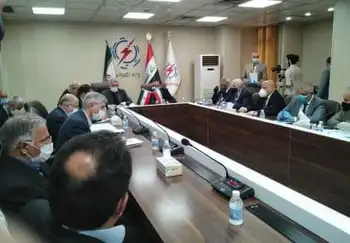High-tech materials may boost geothermal appeal
By Tri-City Herald
Protective Relay Training - Basic
Our customized live online or in‑person group training can be delivered to your staff at your location.

- Live Online
- 12 hours Instructor-led
- Group Training Available
Geothermal resources largely fell out of favor in the early 1980s for power generation when few places proved to have hot enough rock close enough to the earth's surface to make geothermal power generation efficient and economical.
But Peter McGrail, a fellow at the Richland lab, thinks the nanomaterials may help make geothermal a more practical resource by allowing efficient energy production at lower temperatures.
"What we have is a new energy-producing cycle that will allow us to exploit these low-temperature geothermal sources for a more economical power production," McGrail said.
Geothermal already has several advantages. It's renewable and produces almost no pollution, including carbon dioxide. And unlike solar and wind power, it would be constantly available to provide the steady base load a power grid requires.
But in conventional geothermal use for power production, hot rock beneath the earth's surface needs to heat water driven into it to 300 degrees Fahrenheit, or more typically hotter, to make electricity production efficient.
That hot rock might be found 5,000 feet beneath the ground's surface in a few places, but typically it's much, much deeper.
"But with this new technology we could expand to different places where its not economical today but in the future will be," McGrail said.
It might be practical to use the heat from rock that's closer to earth's surface and not so hot, possibly like the rock beneath parts of the Mid-Columbia, because of better heat transfer with the materials McGrail and other PNNL researchers are investigating.
Gas exploration wells being drilled 10,000 feet and deeper in the Mattawa area about 60 miles from the Tri-Cities show that temperatures there are well above 150 degrees, which would be hot enough theoretically with improved heat transfer, McGrail said.
Heat from the ground is typically extracted by forcing water into the ground and then pumping it up after it's flowed through rock and picked up heat. It then goes through a heat exchanger to heat liquid to produce vapor to drive a turbine. If it's water that's being used as a liquid, it has to be 212 degrees at sea level to produce steam.
Some geothermal energy production that relies on water pumped from the ground that's just tens of degrees hotter than the 120 degrees of a home water heater gets around the lower temperature problem by using an organic compound, such as propane. But the propane flashes to gas at a relatively low temperature, meaning there's less energy potential to extract than from a liquid such as water that has a high boiling point and drives the turbine better.
"The cycles are inherently inefficient in the way they remove the heat," McGrail said.
That's where research at the Richland lab may be able to help with what McGrail has named "metal organic heat carriers."
They are nanomaterials with particles one-thousandth the width of a human hair that originally were being investigated at PNNL to see how well they captured carbon dioxide to keep it out of the atmosphere. For those nanomaterials that didn't tend to absorb carbon dioxide well, researchers looked at whether they instead absorbed other compounds.
"Scientific breakthroughs can come from some very unintuitive connections," McGrail said.
Some proved capable of grabbing onto organic compounds and absorbing as much as 30 percent of their own weight, a property that could prove valuable in geothermal conversion systems that rely on lower temperature water and drive turbines with organic compounds.
The nanoparticles can hold onto gas molecules at a much higher temperature, preventing the fluid from flashing to gas in the heat exchanger until it gets to a higher temperature and pressure.
The higher researchers can drive the potential energy, or enthalpy, at a given temperature, the more efficient the energy production and the lower the cost of electricity delivered, McGrail said.
"The principle is really simple," McGrail said.
If tests don't show any performance problems the technology could be ready to use in five years on existing geothermal systems, he said.
Researchers plan to start work by developing some of the nanomaterials that make up the fluid. PNNL plans to have a functioning system in the laboratory producing electricity by the end of the year, McGrail said.
"If successful, enhanced geothermal systems like this could become an important energy source," he said.
A technical and economic analysis conducted by the Massachusetts Institute of Technology estimates that enhanced geothermal systems could provide 10 percent of the nation's overall electrical generating capacity by 2050.
With renewed interest in geothermal, PNNL also is working on other research to advance geothermal systems by developing ways to identify the most promising sites.
"Subsurface characterization is needed for the development of commercially viable approaches," said Vince Vermeul, a senior research engineer at PNNL. He is working to develop collections of different types of tracers that could be used to learn about rock formations deep beneath the earth.
For successful geothermal heat extraction, areas are needed with enough rock fractures for injected fluid to flow through to pick up the heat.
By using tracers a single well could be drilled to inject tracers that react in different ways at different temperatures to provide information to assess whether an area shows promise for geothermal development. That could replace the need to have at least two deep wells to inject water at one and withdraw it at another to gauge the temperatures, potentially reducing costs by millions of dollars.
The tracers also could be used to operate geothermal systems more efficiently by providing information on how much heat is being removed and how quickly the heat is replenished.











